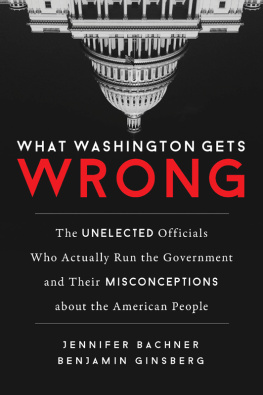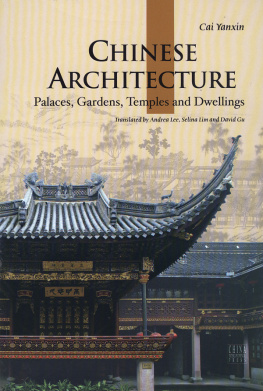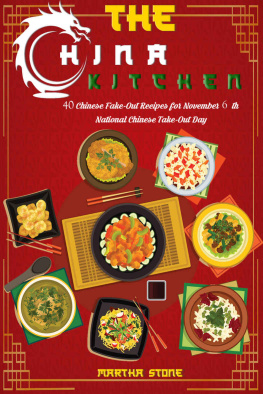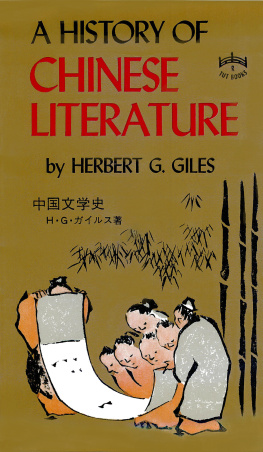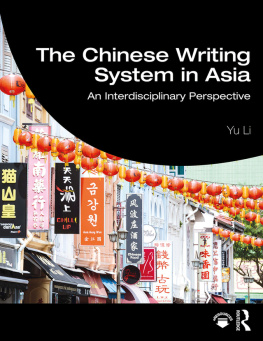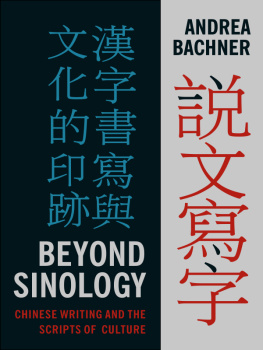BEYOND SINOLOGY
GLOBAL CHINESE CULTURE
GLOBAL CHINESE CULTURE
David Der-wei Wang, Editor
Michael Berry, Speaking in Images: Interviews with Contemporary Chinese Filmmakers
Sylvia Li-chun Lin, Representing Atrocity in Taiwan: The 2/28 Incident and White Terror in Fiction and Film
Michael Berry, A History of Pain: Literary and Cinematic Mappings of Violence in Modern China
Alexander C. Y. Huang, Chinese Shakespeares: A Century of Cultural Exchange
Shu-mei Shih, Chien-hsin Tsai, and Brian Bernards, editors, Sinophone Studies: A Critical Reader
ANDREA BACHNER
BEYOND SINOLOGY
CHINESE WRITING AND THE SCRIPTS OF CULTURE
Columbia University Press New York
Columbia University Press
Publishers Since 1893
New York Chichester, West Sussex
cup.columbia.edu
Copyright 2014 Columbia University Press
All rights reserved
E-ISBN 978-0-231-53630-1
Columbia University Press wishes to express its appreciation for assistance given by the Chiang Ching-kuo Foundation for International Scholarly Exchange and Council for Cultural Affairs in the publication of this series.
This book has been published with the aid of a grant from the Hull Memorial Fund of Cornell University.
Library of Congress Cataloging-in-Publication Data
Bachner, Andrea.
Beyond Signology : Chinese writing and the scripts of culture / Andrea Bachner.
pages cm. (Global Chinese Culture)
Includes bibliographical references and index.
ISBN 978-0-231-16452-8 (cloth : acid-free paper) ISBN 978-0-231-53630-1 (e-book)
1. Chinese language Writing History. 2. Chinese characters History. 3. Inscriptions, Chinese History and criticism. 4. Chinese in literature. 5. Chinese in motion pictures. 6. Mass media and language China. 7. Chinese in art. I. Title.
PL1171.B25 2013
495.1'11dc23
2013016490
A Columbia University Press E-book.
CUP would be pleased to hear about your reading experience with this e-book at .
Cover design: Lisa Hamm
References to websites (URLs) were accurate at the time of writing. Neither the author nor Columbia University Press is responsible for URLs that may have expired or changed since the manuscript was prepared.
CONTENTS
ABOUT CHARACTERS
Somewhat counter to the importance adduced to script specificities in this book, the need to limit typographic complexity made it necessary to settle on one set of Chinese characters. Since most sources consulted for this book are in traditional characters, traditional characters are used for all Chinese text, with the exception of examples that illustrate the difference between traditional and simplified characters.
ABOUT ROMANIZATION
This book generally follows the Pinyin system per scholarly convention in the United States, but uses other transcriptions if they are more common, for instance, in some names.
ABOUT TRANSLATIONS
Unless otherwise noted, translations are my own. To ensure a smoother reading process for an audience in an English-speaking publishing context, as well as to limit the books word count, I had to omit most original versions of quotations not in English, though I still provide references for the original passages. Where appropriate and important, I include key terms in the original.
ABOUT IMAGES
Pragmatic considerations have made it necessary to limit illustrations to a minimum. However, I generally provide references (often to websites) for images not reproduced in this book, though mentioned in my text.
Beyond Sinology began as a side project. I had written about Malaysian-Chinese writing as part of a comparative work on figures of inscription in different cultural contexts (including Latin America and Europe) in my dissertation, but decided to let it rest and explore links between mediality and interculturality in Sinophone cultures during a postdoctoral fellowship year at Stanford University instead. The participation in a conference on global Chinese cultures in late 2007 at Harvard University served as a catalyst for what was to become Beyond Sinology, as Rey Chow, Eric Hayot, Haun Saussy, Shu-mei Shih, David Wang, and others welcomed and challenged my claim that a reflection on Sinophone literature and culture needed its complementary other: a thought on the sinograph. Hence, what had begun as a project on Chinese medialities in general began to turn squarely to the question of Chinese script. In the following years, the book grew from a short theoretical reflection into a vast project with multiple chapters and a plethora of examples, before I rewrote it in its current, slimmer shape for the sake of conceptual emphasis and readability.
The generosity of the Mellon Foundation accompanied the beginning phase of the book (during a postdoctoral Humanities Fellowship at Stanford University in 20072008), and allowed me to finish a draft of the manuscript, while I was working on a second project as a fellow at the Humanities Forum at the University of Pennsylvania in 20102011. A grant from the Chiang Ching-kuo Foundation enabled me to conduct necessary research during several trips to Taiwan between 2009 and 2011. The Pennsylvania State University generously supported my year as a Humanities Forum fellow, as well as granted me a semester of teaching release in Fall 2012 so I could concentrate on manuscript revisions. I would also like to thank Kirk Denton, editor of Modern Chinese Literature and Culture, and Sheila Sager from the Pennsylvania State University Press for their kind permission to use parts of already published articles in my book: Graphic Germs: Mediality, Virulence, Chinese Writing, Modern Chinese Literature and Culture 23, no. 1 (Spring 2011): 197225; and Chinese Intextuations of the World, Comparative Literature Studies 47, no. 3 (2010): 318345, respectively. I am also profoundly grateful to artists and editors for permission to reprint artwork, especially to Ah Weng, Hsia Yu, Daria Pahhota from BIG, Xu Bing, and Zhang Huan
Now that the time has come to let go and release the book to a larger audience, I would like to acknowledge the many instances of dialogue, exchanges of ideas, and textual circulations, in person or virtually, that have nourished my book: with colleagues and students at Stanford, Ohio State, Penn State, and Academia Sinica, as well as during various conferences and talks and in personal conversations. Without the kindness, intellectual generosity, and critical acumen of all of you, Beyond Sinology would not exist in this form. Special thanks go to Peng Hsiao-yen, host extraordinaire during my various research stays at Academia Sinica, Taiwan, whose insights importantly shaped the structure and conceptual ideas of my project; to Wang Ban, who had the time for countless inspiring conversations during my Stanford year, and thanks to whom the project took a more political turn and includes more reflections on PRC culture; to Christopher Bush, who generously shared his own work and allayed my anxieties about European modernism and the publishing industry; to Tsai Chien-hsin, who has been a steadfast friend and staunch supporter of my ideas since our graduate student days and who creatively translated the book title into Chinese; and to Eric Hayot, without whose kindness, intellectual insight, and pragmatic common sense the manuscript might not have emerged from the de profundis of academic publishing.


